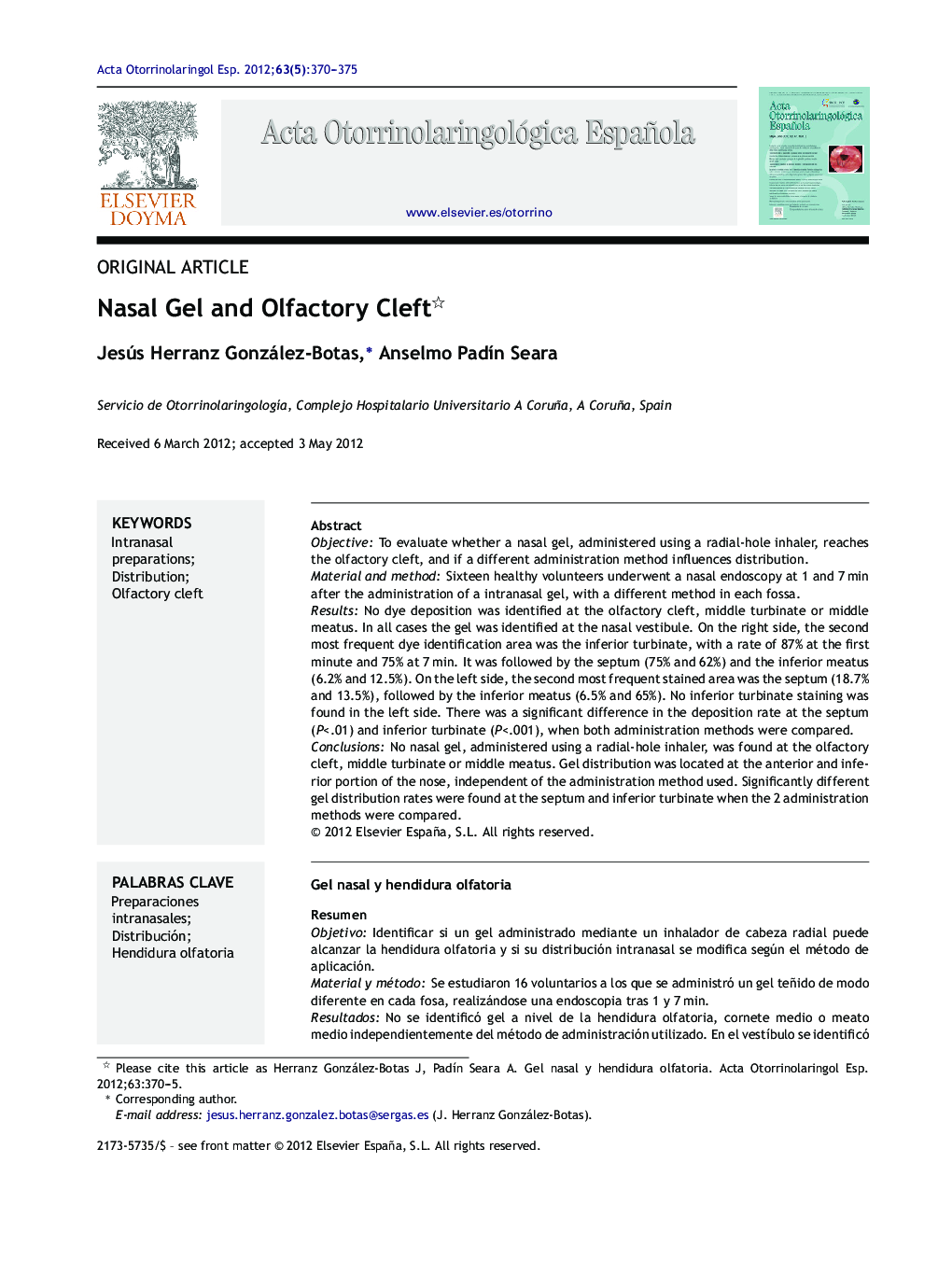| Article ID | Journal | Published Year | Pages | File Type |
|---|---|---|---|---|
| 4101117 | Acta Otorrinolaringologica (English Edition) | 2012 | 6 Pages |
ObjectiveTo evaluate whether a nasal gel, administered using a radial-hole inhaler, reaches the olfactory cleft, and if a different administration method influences distribution.Material and methodSixteen healthy volunteers underwent a nasal endoscopy at 1 and 7 min after the administration of a intranasal gel, with a different method in each fossa.ResultsNo dye deposition was identified at the olfactory cleft, middle turbinate or middle meatus. In all cases the gel was identified at the nasal vestibule. On the right side, the second most frequent dye identification area was the inferior turbinate, with a rate of 87% at the first minute and 75% at 7 min. It was followed by the septum (75% and 62%) and the inferior meatus (6.2% and 12.5%). On the left side, the second most frequent stained area was the septum (18.7% and 13.5%), followed by the inferior meatus (6.5% and 65%). No inferior turbinate staining was found in the left side. There was a significant difference in the deposition rate at the septum (P<.01) and inferior turbinate (P<.001), when both administration methods were compared.ConclusionsNo nasal gel, administered using a radial-hole inhaler, was found at the olfactory cleft, middle turbinate or middle meatus. Gel distribution was located at the anterior and inferior portion of the nose, independent of the administration method used. Significantly different gel distribution rates were found at the septum and inferior turbinate when the 2 administration methods were compared.
ResumenObjetivoIdentificar si un gel administrado mediante un inhalador de cabeza radial puede alcanzar la hendidura olfatoria y si su distribución intranasal se modifica según el método de aplicación.Material y métodoSe estudiaron 16 voluntarios a los que se administró un gel teñido de modo diferente en cada fosa, realizándose una endoscopia tras 1 y 7 min.ResultadosNo se identificó gel a nivel de la hendidura olfatoria, cornete medio o meato medio independientemente del método de administración utilizado. En el vestíbulo se identificó colorante en todos los casos. En el lado derecho la segunda localización más frecuente fue el cornete inferior con una incidencia del 87% al minuto y del 75% a los 7 min. Le siguieron el tabique, 75 y 62%, y el meato inferior, 6,2 y 12,5%. En el lado izquierdo la segunda localización más frecuente fue el tabique, 18,7 y 13,5%, seguida del meato inferior, 6,5 y 65%. Las diferencias en la presencia de colorante a nivel del septo (p < 0,01) y el cornete inferior fueron significativas.ConclusionesNo se ha identificado la presencia de gel a nivel de la hendidura olfatoria, cornete medio o meato medio. La distribución se localiza a nivel de la parte anterior e inferior de la fosa nasal, con diferencias significativas si se emplean métodos de administración diferentes.
